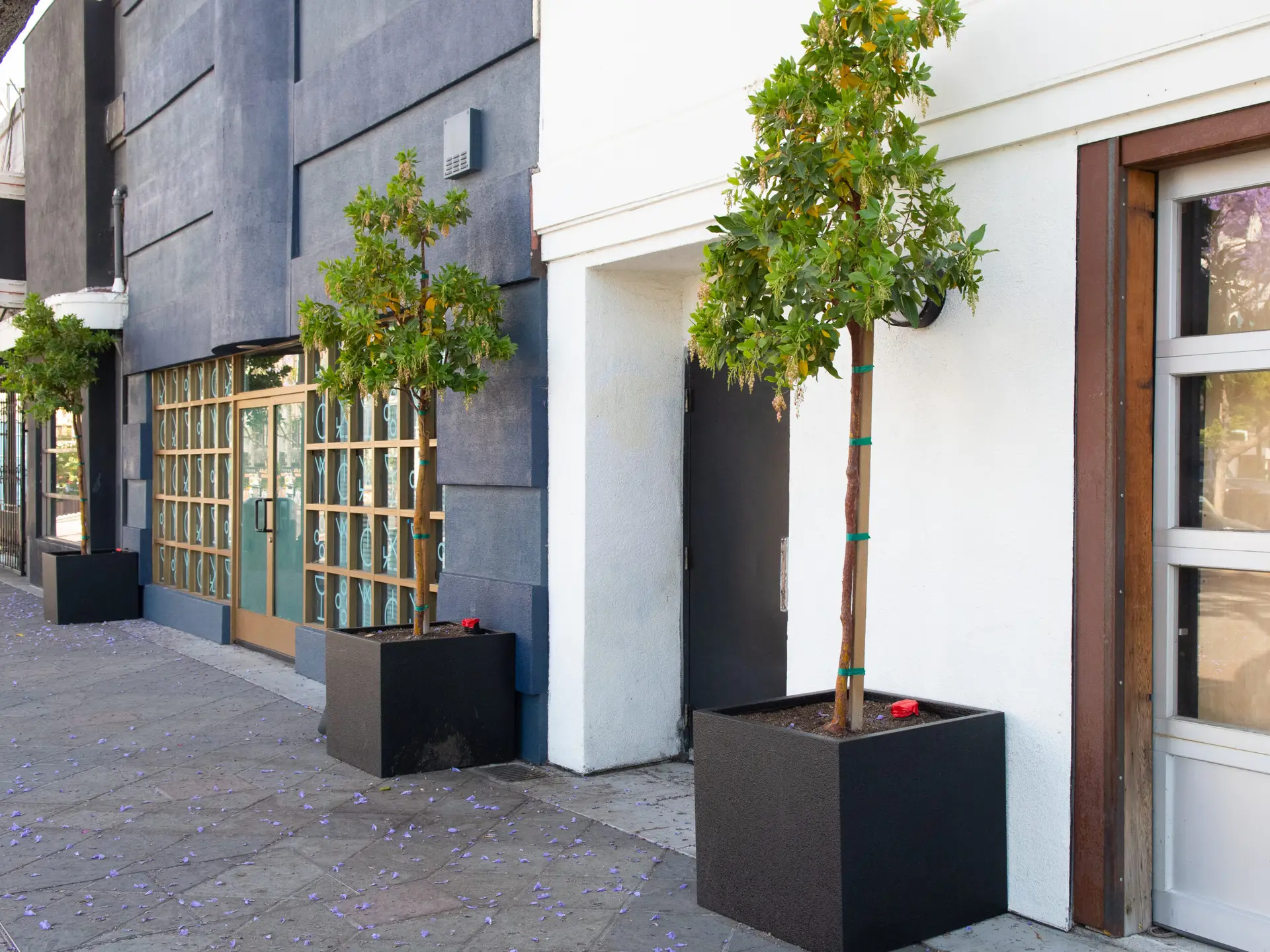SoFA Urban Garden
Located at 420 South First Street
The oak woodland is an expansive ecosystem in California and here in the Bay Area. In fact, a large portion of open space around San Jose is made of oak woodland. Plant species here are very well adapted to dry climates and can survive California’s heat waves. Many animals live among oak trees, which provide shelter and nutrients for critters such as turkeys, coyotes, mountain lions, deer, and large birds of prey.
Oak Woodland
Marina Strawberry Tree
Scientific Name: Arbutus menziesii ‘Marina’
Native Habitat: Grows in western North America in warmer climates.
Marina Strawberry Trees are both a decorative and drought tolerant tree that is popular to use for landscaping in dryer climates. Its pink flowers bloom year round, and attract bird pollinators. The ‘Marina’ variety was selected in 1984 in a San Francisco garden, and has been a nursery staple since.

Marina Strawberry Tree
Scientific Name: Arbutus menziesii ‘Marina’
Native Habitat: Grows in western North America in warmer climates.
Marina Strawberry Trees are both a decorative and drought tolerant tree that is popular to use for landscaping in dryer climates. Its pink flowers bloom year round, and attract bird pollinators. The ‘Marina’ variety was selected in 1984 in a San Francisco garden, and has been a nursery staple since.
Planter Themes
Redwood Forest
California Wetland
Oak Woodland
California Chaparral
California Grassland
Coastal Sage Scrub
DID YOU ENJOY THIS EXPERIENCE?
Let us know in this survey
HOW ARE THE PLANTS DOING?
Submit a maintenance request







